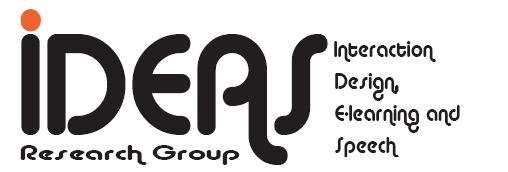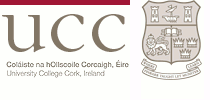Using Wireless Technology to Facilitate Campus Navigation
Tracey Mehigan, Ian Pitt
Navigating around a university campus can be difficult for visitors and incoming students/staff, and is a particular challenge for vision-impaired students and staff. In the case of University College Cork (UCC), the problem is compounded by the non-linear layout and undulating topography of the campus, and by the fact that many university buildings are located a considerable distance from the main campus and separated from it by main roads, etc..
Like most other universities and similar institutions worldwide, UCC relies mainly on sign-posts and maps to help students and visitors find their way around campus. Maps are displayed on billboard-style signs at various points on campus, and may also be downloaded from the university's website. However, these are not appropriate for vision-impaired users.
UCC's Disability Support Service provides mobility training to enable blind and vision-impaired students and staff to safely and independently navigate around the campus. This training is time-consuming for all parties and is costly to provide. It is also route-specific: for example, if a blind student who has already received mobility training is required to attend lectures in a building they have not previously visited, they may require further training on the new route. It is not feasible to provide this kind of training for blind/visually-impaired visitors.
A potential solution to these problems is to provide navigation data using wireless and mobile devices. Ideally this should be done using technologies that are (or will shortly be) widely supported on smart-phones, thus ensuring that the system is accessible to one-time visitors as well as regular users. This is the aim of the current project.
A study was conducted in order to identify user-requirements. A number of blind and visually-impaired students were interviewed and asked to describe the routes they use, to identify factors that aid or impede navigation on each route, and to comment on general issues concerning campus navigation. Having identified the most widely-used routes and those which cause the most problems, the participants were then asked to traverse the routes in the company of an experimenter whilst discussing step-by-step the navigational cues they were using. The students involved were at various stages of their studies, from first-year to final-year, and thus had varying levels of familiarity with the campus. They included both guide-dog and long-cane users. Interviews and walkthroughs were also conducted with UCC's mobility trainer and other members of the Disability Support Service dealing with issues relating to campus access.
The findings indicate that both long-cane and guide-dog users make use of environmental sounds to determine their position. Many of the participants reported using manholes as route-makers since each sounds different (silence, various degrees of water flow, etc.). Moreover, it is easy to distinguish a manhole-cover from solid ground when walking. Other environmental cues used by participants include the river, wind direction, crowd noise and even the scent of coffee from the cafes. Participants reported that open spaces cause them the most difficulty when navigating. The Honan Plaza, a large, open area with little variation in terrain and few distinctive sources of sound, posed major problems to white-cane users, and could only be navigated by guide-dog users if the dog was familiar with the route.
Having identified user requirements, potential commercial solutions were examined. It was concluded that no off-the-shelf system fully meets UCC's requirements. None of the candidates offers feedback that suits all users: most provide speech output only and offer little control, making it difficult to use the feedback whilst also listening for environmental cues. Most are difficult to use in conjunction with other mobility aids (guide-dog, long cane), and none provides information on terrain, etc.. In most cases there are also issues with the accuracy or reliability of the localization information provided, ability to operate both indoors and outdoors, and power drain/battery life.
In the light of these findings, a prototype system has been developed for use on the UCC campus. Since positioning technology is developing at a rapid pace, the system has been designed with two distinct layers:
- a navigation layer that obtains data on position and orientation
- an interface layer that makes this information available to the user.
This separation will make it easier to upgrade the system to take advantage of new technologies as they become available.
The Navigation Layer will initially be based on ULP Bluetooth 4.0. Bluetooth is widely available on smartphones, and offers a low-cost, low energy wireless solution. A network of beacons will provide the locational information, allowing accurate positioning both indoors and out.
The User Interface Layer has been designed with both guide-dog and long-cane users in mind. It incorporates three audio feedback options - simple audio, speech and spatial audio. Users can select combinations of these options to suit their needs. Haptic Feedback is also available as an option, providing varying levels of pulsed vibrations to indicate key features / areas of campus. Map-based visual feedback is provided for sighted users. Other features of the user interface include:
- A You are Here facility to inform the system user of their exact location on campus at the time requested
- A Route marking facility to explain to the user the best route from their current location or a particular building to their required destination
- A Near me facility to allow users to find services on campus
- An Orientation facility, based on compass feedback, to aid users should they become disorientated while on campus
The prototype system is currently undergoing initial user-testing.
The results of the requirements-gathering process and the review of candidate technologies were described in a presentation given on 30th May 2012 at a conference on Access to Historical Building and Spaces organised by the National Disability Authority.
Further details of the project and the results of initial user-testing were presented at the 2012 International Conference on Computers Helping People with Special Needs.

